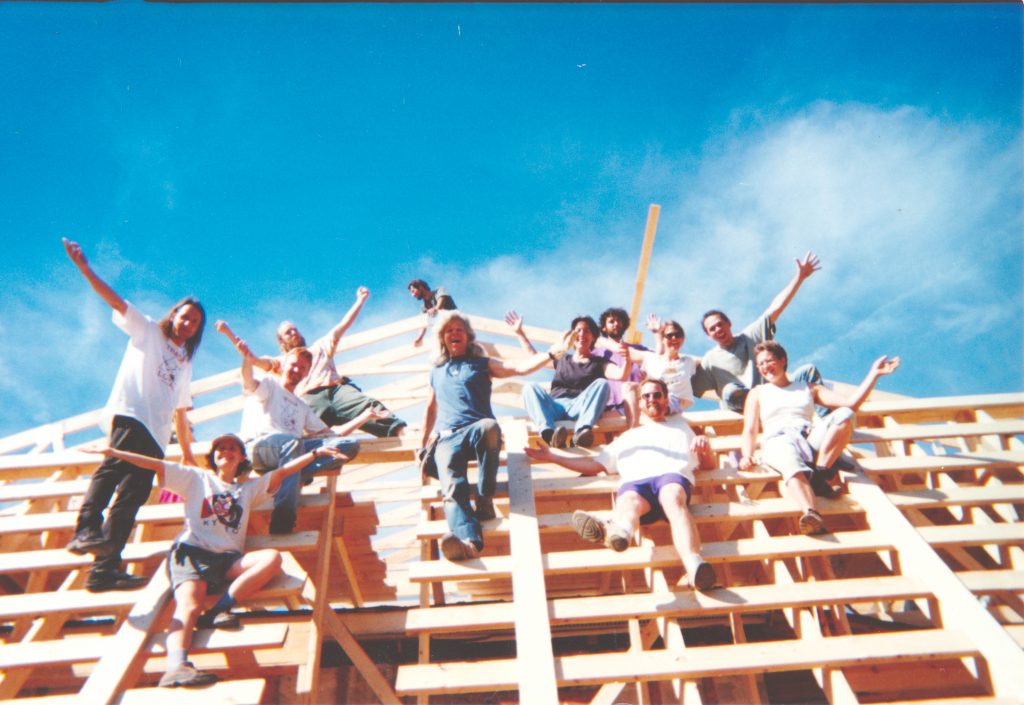
By Luis – (translated from Spanish by Veronica Eldredge)
1
Border is not said, it is felt: imaginary line separating
past from future, childhood from promises.
Boundary between “I was” and “will be”, modern artifice:
policemen, trained dogs, surveillance cameras, face recognition
technology and walls crowned with metal thorns.
Border is not said, it hurts: political division that breaks
the “you and I” from “us”.
(In the Tojolabal language, in Chiapas, there is no difference
between “I” or “We”, nor the concepts “I” or “Mine”.
It is not what I want but what We, as a community, need).
Going away and seeing departure are not the same, a knife
does not wield from the blade, absence
fills the house one day before farewell.
Those who remain watch their lives split in two,
they live engulfed by memories and objects evoking memories.
The ones who stay sometimes hear the voices of those
who migrated, silence and abandonment are seated at the table.
Everything changed. Migration has no return.
Border is never said easily, it conjugates: a verb or a cage divides
“we are” from “nothingness”, the drowned dead from those
killed by a bullet. Migration has no cure.
Frontera is not said, it is crossed: everything is imagination, epic and
romanticism, except for those who walked there and who arrived
no further. Migration has no solution.
(One night, a girl asks her father: “Dad, ¿when will we stop
being migrants?” And in the beautiful dark sky, stars shining silently,
with indifference).
Butterflies migrated, magic and fluttering were converted,
through hypnosis, into dream, then nightmare: Americage.
They tied their wings with wire (so they could not return)
convinced them of not being butterflies with flight of fire
and inner sun
that come and go
go and come
na
tu
ral
ly.
We crossed other limits: Butterfly who flies no more,
crawls through shadows under darkness.
Migrant butterflies, exiled, without wings, transformed into
other animals, rodents working arduously in the name of the Empire.
2
Our tongue is connected to our heart, we say because we feel:
we miss you, we love you, we ask you to return to your land.
We are waiting for you.
Call us if one day you come back on your own,
or they kick you out, one day whether voluntarily
or deported, if one day you return in life
and not in death.
Return to your land before they –yes, the very same–
cut down our last tree, before they polluted our last river
before your whole family has been murdered.
Come back before the American dream converts you into
a different being, soulless, denatured, before their corporations
destroy our one home or steal and invade y/our land.
Did you hear us? Did you forget about us?
Do you still recognize us?
Will you… ?
Border is not a word: it is a two-way absence, a void,
a many-headed monster, capitalist hydra: destiny, anesthesia, fiction.
Frontera is not a word: it is lies, plague, corruption, pain
within pain, it is fear, torture, rape, despair, fever, skulls, disdain, it is plunder,
racism, deep shame, amputated limbs and corpses under the desert sun of women,
men and children who never returned to see their Mother again.
Migration today has no return no solution no cure.
We must unravel the migrant plot: postmigrate, retrace the path,
dismantle their business, un-migrate, set our own limits,
undo the knots and the wrongs, decolonize us, fly again,
come back home, resist, save ourselves.
(In the Sonoran Desert, long before there was a border, tribal members
of the Tohono Oʼodham Nation traveled back and forth to visit their family,
migrating with the seasons from their homes in the valleys to their cooler
mountain dwellings. They state “wall” does not exist in their language).
Border is another device of logic, it structures relationships of domination,
it is the last step that normalizes a neocolonial fiction: the North as
the only destination because we, in the South,
apparently
are nothing,
no one.
Border is not just a wall. (It is a veil that numbs and conceals the truth).
Frontera is not just a word. (It is one of the defense weapons of the Empire
that destroys other horizons of meaning). Border will be a word that we
barely remember one day.
Contact Luis : saeta.ah@cryptolab.net

 The 2020 Slingshot organizer is available now. By selling the organizer, we are able to print and give away this paper for free, so if you want to support the paper, please buy the organizer for yourself and as gifts.
The 2020 Slingshot organizer is available now. By selling the organizer, we are able to print and give away this paper for free, so if you want to support the paper, please buy the organizer for yourself and as gifts.
